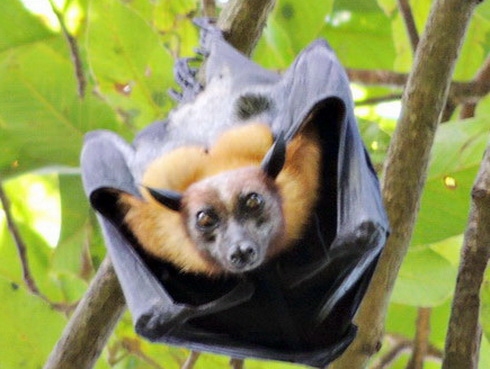When the landscape is embellished, an ancient pagoda in the southern province of Soc Trang has attracted thousands of bats, including endangered bats.

On the morning of August 15, 2007, the main hall of the Mahatup (Bat) Pagoda, a national cultural historic of more than 400 years old in Soc Trang Province – was virtually destroyed in a fire. Nearly three years later, the ancient temple was restored at a cost of VND3.5 billion from the state budget but the number of rare bats in the pagoda was gradually reduced because of illegal hunting and affected habitat.
The road to the temple two years ago was full of mud and was occupied by trader of the Spring Market (old) so congestion and traffic accidents often occurred on this road.
According to monk Lam Tu Linh, vice manager of the Bat Pagoda, Satraco company invested VND45 billion ($2.3 million) to upgrade the road and open a tourist site near the temple to serve visitors who come here to burn incense, make offerings to the Buddha and see rare bats.
"The environment is now green, clean, not polluting as before," the monk said.
From August 2012, rare bats began flocking to the temple more and more because the natural surrounding environment began to revive. A year ago there were only about 400 bats hanging on 3-4 trees in the temple but now there are thousands of bats in the temple.
Two bat species in the ancient temple are pretopus vampyrus and Thai pretopus vampyrus, which are listed as endangered species.
Nobody knows when bats came to the pagoda. An old woman said that she saw bats in the pagoda when she was a little girl. “Whenever they returned to the pagoda, they created a black cloud. The garden was vast but if they returned, I could not see the green of trees but only the black of bats,” she said.
It is very strange that bats only perch on the pagoda’s trees. They even do not perch on branches of trees of families around the temple that extend into the pagoda’s campus. During hot afternoons, they flap their wings, making noise in the pagoda.
It is also odd that these bats never evacuate their bowels in the pagoda, but in a garden that is far from the temple.
Perhaps bats at the Doi Pagoda are the largest species in Vietnam. A newborn bat has wingspan of up to 50cm. Adult bats are up to 1kg in weight and 1.5m of wingspan. Some bats are up to 1.5kg in weight and 2m in wingspan.
These bats only give birth once a year and only one baby bat, in June. They do not build nets so after giving birth, they hold their babies through the night, for 3-4 months, until baby bats can fly and seek food themselves.